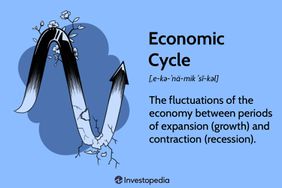| Car Buyer vs. Salesman – Payoff Matrix | Salesman | | |
| | | Cooperate | Defect |
| Buyer | Cooperate | (a) 7, 7 | (c) 0,10 |
| | Defect | (b) 10, 0 | (d) 3, 3 |
What does this matrix tell us? If you drive a hard bargain and get a substantial reduction in the car price, you are likely to be fully satisfied with the deal, but the salesman is likely to be unsatisfied because of the loss of commission (as can be seen in cell b). Conversely, if the salesman sticks to his guns and does not budge on price, you are likely to be unsatisfied with the deal while the salesman would be fully satisfied (cell c).
Your satisfaction level may be less if you simply walked in and paid the full sticker price (cell a). The salesman in this situation is also likely to be less than fully satisfied, since your willingness to pay full price may leave him wondering if he could have “steered” you to a more expensive model, or added some more bells and whistles to gain more commission.
Cell (d) shows a much lower degree of satisfaction for both buyer and seller, since prolonged haggling may have eventually led to a reluctant compromise on the price paid for the car. Likewise, with salary negotiations, you may be ill-advised to take the first offer that a potential employer makes to you (assuming you know that you’re worth more).
Cooperating by taking the first offer may seem like an easy solution in a difficult job market, but it may result in you leaving some money on the table. Defecting (i.e., negotiating) for a higher salary may indeed fetch you a fatter pay package. Conversely, if the employer is not willing to pay more, you may be dissatisfied with the final offer.
Hopefully, the salary negotiations do not turn acrimonious, since that may result in a lower level of satisfaction for you and the employer. The buyer-salesman payoff matrix shown earlier can be easily extended to show the satisfaction level for the job seeker versus the employer.
Example of Prisoner's Dilemma in Economics
We'll wrap up the article by talking through how the prisoner's dilemma appears in economics. A macroeconomic example of the prisoner's dilemma can be found in the context of government fiscal policies during an economic downturn. When there's an economic recession, individual governments face the choice of implementing expansionary fiscal policies to stimulate economic growth. However, the effectiveness of these policies depends on the actions of other governments.
Consider if all countries simultaneously adopt expansionary fiscal policies. The global economy would benefit from increased aggregate demand, leading to a potential recovery. However, if one country decides to pursue a more conservative fiscal approach, focusing on austerity measures or budget cuts, it may experience short-term economic stability. However, the global impact could be detrimental.
This situation mirrors the prisoner's dilemma, as each government must decide whether to cooperate by collectively implementing expansionary policies or defect by pursuing more conservative measures. If all countries cooperate, the global economy can recover more effectively. However, if one or more countries defect and pursue the maximum personal gain, it can hinder the recovery for all nations, resulting in a suboptimal outcome for the broader group.
What Is the Best Solution to the Prisoner's Dilemma?
When playing against only one other player, it may be advantageous to always defect. This means you are guaranteed to win or tie, though this is at the detriment of the other player. Note that when you play against more than one player, cooperation and defense may not always call for defectors.
What Is the Significance of the Nash Equilibrium in the Prisoner's Dilemma?
The Nash Equilibrium in the prisoner's dilemma occurs when both participants choose to betray, and neither has an incentive to unilaterally change their strategy. This stable state underscores the challenge of reaching optimal cooperation due to the self-interest of the participants, emphasizing the tension between individual and collective rationality.
Can the Prisoner's Dilemma Be Applied to Social and Ethical Dilemmas?
Yes, the prisoner's dilemma can be applied to so many different situations. In situations where individual interests conflict with collective interests, and cooperation is necessary for the greater good, the dynamics of the prisoner's dilemma. This can arise in social situations, ethical situations, allocation of scarce resources, provisioning for public good, and so many other situations.
Are There Criticisms or Limitations to the Concept of the Prisoner's Dilemma?
Yes. One limitation is that the original dilemma assumes a one-shot, non-repeated interaction, whereas many real-world scenarios involve repeated interactions. Another limitation is cultural and contextual factors may influence decision-making. This means different people may choose differently based on many different, unpredictible reasons. Last, some critics may say that the prisoner's dilemma may oversimplify humans and their complex behavior.
The Bottom Line
The prisoner’s dilemma shows us that mere cooperation is not always in one’s best interests. In fact, when shopping for a big-ticket item such as a car, bargaining is the preferred course of action from the consumers' point of view. Otherwise, the car dealership may adopt a policy of inflexibility in price negotiations, maximizing its profits but resulting in consumers overpaying for their vehicles.
Understanding the relative payoffs of cooperating versus defecting may stimulate you to engage in significant price negotiations before you make a big purchase.

















Comments on "How Fire Season Affects the Economy" :